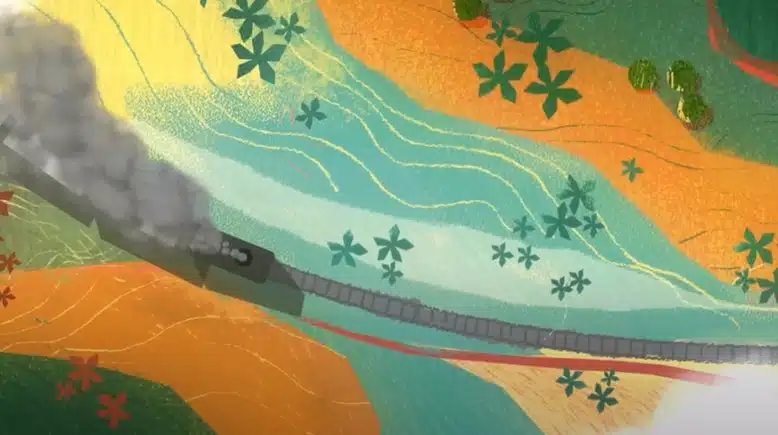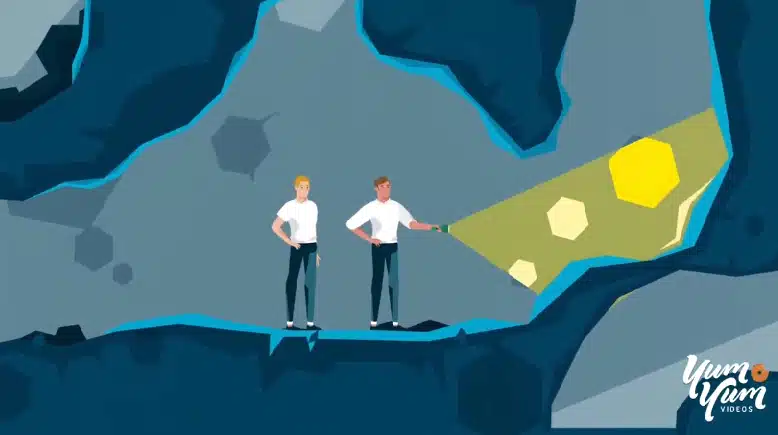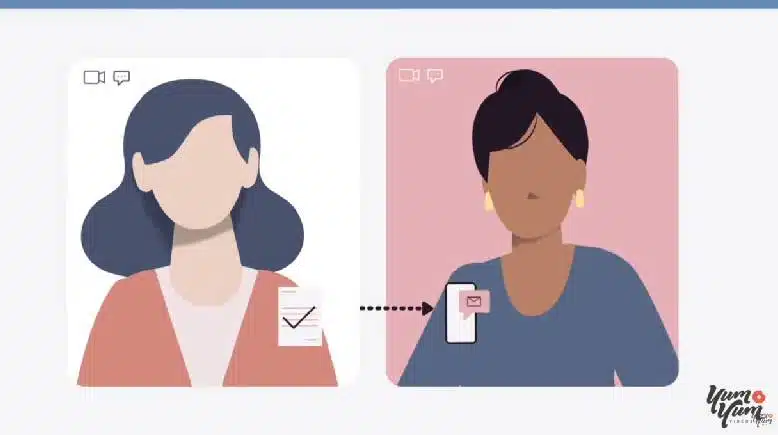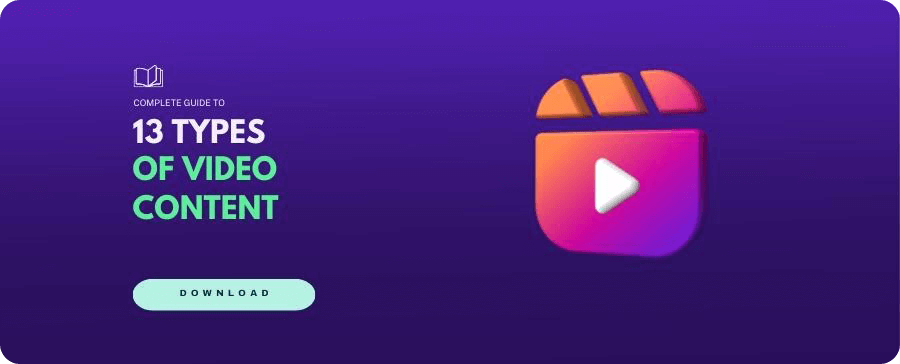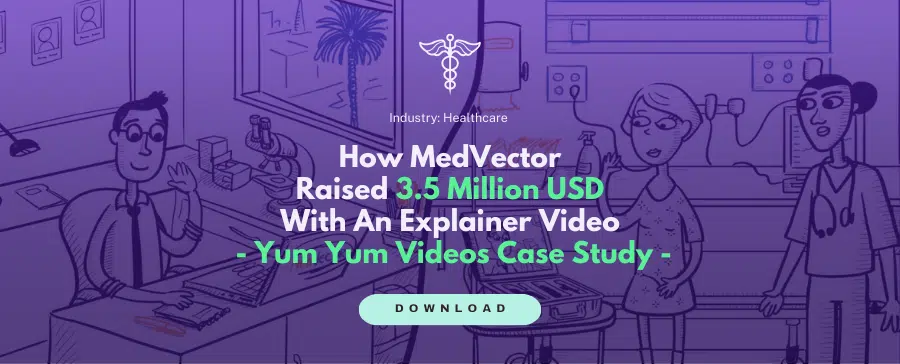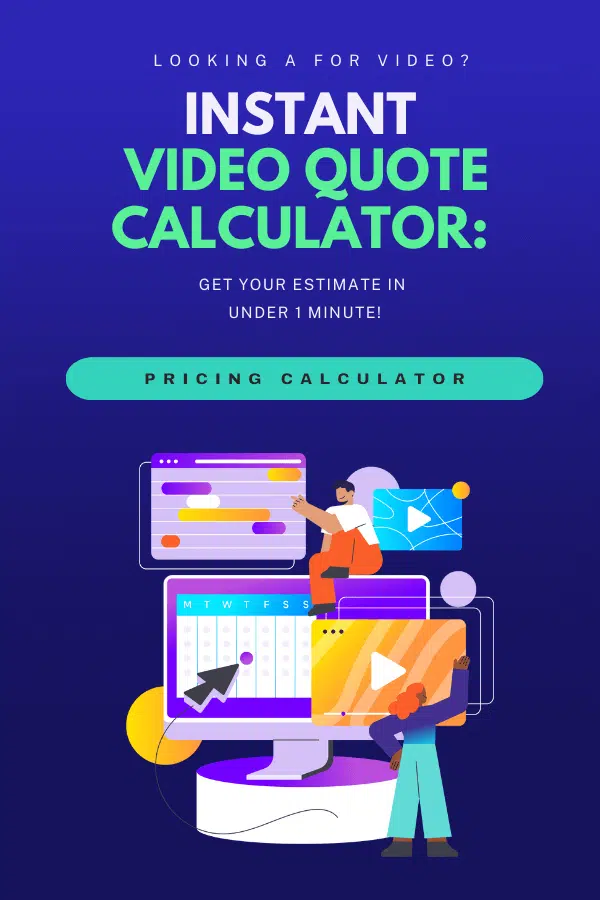The Art of Storytelling in Explainer Video Scripts (with Real Examples)

Written by Victor Blasco
CEO of Yum Yum Videos
02/05/25
Author: Victor Blasco
16 min reading
Video Production

Since the dawn of civilization, storytelling has been one of humanity’s most powerful tools to communicate, educate, and be remembered. And today, it’s more relevant than ever — especially in marketing and video content.
That’s why, in this article, we’re not just going to show you how to write an explainer video script. We’ll explore how storytelling transforms a basic message into an engaging narrative that connects with your audienece and drives action.
At Yum Yum Videos, we’ve spent over a decade crafting explainer scripts rooted in storytelling — and in this guide, we’ll share practical tips, proven structures, and real explainer video script examples to help you write your own.
Table of Contents
What Is an Explainer Video Script?
You’ve learned plenty today about how to write a script and what an explainer video is. An explainer video is a short, engaging piece of content that breaks down a product, service, or concept in a simple and compelling way — usually built around a well-crafted script.
The script includes the narration, structure, and flow of the story — defining what’s said, how it’s said, and when. A great explainer script focuses on your audience’s problem, introduces your solution, and ends with a strong call to action.
It’s not just about writing words — it’s about crafting a narrative that informs, connects, and converts.
And if you are looking for free explainer video script templates, why not start with this eBook?
Need more insights on explainer video production? Explore our full Explainer Video Hub packed with expert tips and inspiration.
How to Write an Explainer Video Script
Now, we’re going to dive into some helpful tips for writing a compelling script. You will also find them in our free eBook “How to write a script,” along with some extra information on scriptwriting for explainer videos that I believe is incredibly helpful. Now, without further ado, let’s get started!
1. Start with a Creative Brief
Video content can be tailored to achieve different aims, so it’s a great idea to start your production process with a creative brief to determine your goals more easily.
A creative brief is basically a questionnaire designed to help you nail down a few general aspects of your video. It includes questions about your product or service, the message you want to convey, the goals of your piece, and any other important points or ideas.
There’s no template or set number of questions for a creative brief because every project is different. However, here are a few crucial questions I believe every creative brief should include, regardless of the project’s size or scope:
- What will be the central idea of your explainer video?
- What key benefit does your message, product, or service bring to the table?
- What makes your message, product, or service stand out from others like it?
- What branding elements characterize your company?
- What would you like the viewers to do after watching your video?
These five questions might not give you all the answers you’ll need for your video, but they’ll provide a good starting point to help you shape the early and middle stages of the production process and prevent unexpected changes in the explainer video cost.
2. Know Your Target Audience
Before producing your explainer video script, you should make sure to know your audience like the palm of your hand. This way, you’ll be able to build a strong connection between them and the story you’re telling.
So, I suggest you try to answer the following questions before you get started on your script:
- What does your ideal customer look like?
- How old are they?
- Where do they live?
- Where do they work?
- What do they do in their free time?
- Any other questions that might help you define them.
With this information in mind, you will be able to define your buyer persona and tailor your script according to their characteristics and expectations. Take your time and don’t rush this step it will be your guiding light throughout the whole video production process.
You might wonder what makes the buyer persona so important. Here’s what you should know. First, this persona will help you craft the characters in the later stages of production, particularly, when you have to make the storyboard. Secondly, your viewers will find those animated characters relatable, which will help you connect with them and increase trust in your brand. The result? More conversions and sales!
3. Follow the Explainer Video Script Structure
I’ve found that it’s best not to improvise when writing a script. If you follow the classical narrative structure (a beginning-middle-end logic), your script will be coherent and much more engaging. Using this structure as a template will also make the writing process easier.
When it comes to scriptwriting for explainer videos, the narrative structure follows the classical three steps but under slightly different names:
Act 1: The What
Explain to your audience what problem your company can solve for them. This will generate curiosity and interest in your video and encourage viewers to watch all the way through. Remember not to name or show your brand just yet. In this stage of scriptwriting, your sole focus is your target audience’s problem.
Take a look at this video script example to better understand what I mean:
Act 2: The How
At this point, you have to explain or show your viewers how your product can address their specific problem. This section usually starts when the brand logo shows up or when the brand is mentioned for the first time.
Act 3: The Why
Now’s the time to explain to your audience why they should choose you over your competitors. In this stage, describe your product features and main advantages. This is definitely the most “salesy” part of the explainer video script. It’s your big chance to persuade your viewers and showcase your uniqueness by detailing why your product or service is the best in the market.
Can you identify the three “acts” in this video script example?
4. Don’t Forget about the Story!
While the three-act structure gives you a fantastic framework for the early stages of developing your script, your video will live or die by the story you tell your viewers.
Stories are made even more enjoyable by the characters that tell them. So, start by creating characters that reflect your target audience! Then, place them in a situation that your viewers can relate to. This will give your product or service the opportunity to shine and become the story’s hero.
Lastly, inject some emotion into the story. Humor tends to be the go-to choice, but plenty of videos take a more personal and heartwarming approach to great success.
5. Mind Your Tone and Language
And while we are on the topic of emotion, I’d like to discuss the importance of keeping your tone and language consistent when scriptwriting for explainer videos.
In this context, “tone” might sound a bit abstract at first, but it just means making the whole script “sound” the same from beginning to end. If yours begins with a humorous approach, don’t suddenly become serious. Likewise, if you’re going for a more dramatic tone, don’t start cracking jokes out of the blue! Hard turns such as these will feel awkward and out of place, and your video will come across as disjointed.
Using the right tone and language will help you more accurately tailor your content to the right audience and increase its appeal. If young individuals make up your target, your approach should be more casual. Likewise, if you want to appeal to a highly knowledgeable audience, you should include terminology they’d be familiar with.
Just take a look at this explainer video script example and pay attention to the tone and language used to discuss such a delicate topic.
6. Maintain Your Explainer Video Script’s Focus
As you work on your script, providing lots of details or gushing about your product’s benefits might be tempting. However, you have to be strong and resist the temptation!
Keep your video’s focus on your message to make it more powerful and effective. Not to mention that this will also make it a lot easier to keep viewers engaged.
Remember that explainers aren’t meant to be long-winded lists of features or descriptions but optimized narratives that compellingly convey your message instead. If you try to cram too much information into a single piece, you’ll end up with a messy script that won’t help you accomplish your marketing goals.
7. Include Visual and Sound Ideas
Sounds weird, I know, but here’s the thing: as you work on your script, you’ll start picturing how certain scenes will accompany specific parts of your script. These wonderful ideas shouldn’t be left to be tended to later; hoping you’ll remember them all!
Make ample use of your text-processor’s comment tool and leave as many comments about visuals and sound cues as you can. While it’s true that most of them won’t make it to the final product as-is, they will be of great help during your creative process and nurture other ideas later down the line in the production process!
When you write about your main character, does a specific scene or image come to mind? Add a comment about it! Do you think a particular part of your script should use some type of music or sound effect to convey a specific feeling? Jot it down! No idea goes to waste when scriptwriting for explainer videos 😉.
8. Go Straight to the Point
Having fallen to 8 seconds, our attention span is now shorter than ever. Moreover, a video’s first 2.7 seconds are key to hooking viewers and keeping them from clicking away.
But what does this all mean for you? It means you have to be straightforward and compelling when communicating your message. That’s why the best piece of advice I can give you is to keep your script as simple as possible.
Don’t try to explain everything about your product or brand in a single 30-second explainer video. I know it’s tempting, but you can easily complement that short piece with other content (sales calls, blog articles, and more) and even make an animated video series!
Check out this explainer video script example and see how we’ve managed to explain how this product works without beating around the bush:
If you want more inspo for your script, I encourage you to check out our article about product video examples 😉
9. Keep It Short and Sweet
There is a strong connection between video length and engagement. If you want to keep your viewers hooked and have them watch until the end, your biggest challenge will be taking as little time as possible to deliver your key message. If it doesn’t take you more than 2 minutes, then you’re on the right track.
Based on our experience in scriptwriting for explainer videos, I believe that the optimal length is 90 seconds.
However, you might ask yourself: “but then how do I know how long my video script should be?” Well, if 160 written words represent one minute of audiovisual content and you want a 90-second video, you’ll need 240 words for your script. Simple!
10. Include a Clear CTA
Last but not least, you must nudge your viewers in the right direction after watching your video. Whether it’s subscribing to your channel or newsletter, downloading a free resource, requesting a demo, or sharing on social media, you need to tell them to do it.
So, include a simple, clear, and irresistible Call To Action (CTA) to help them understand what you expect from them.
An important rule of scriptwriting for explainer videos (or any other type of video for that matter) is to include a single Call To Action to avoid any potential confusion. If your video marketing strategy requires different CTAs, I suggest you make different versions of the same video with a different CTA in each one.
Take a look at the Call To Action in this explainer video script example:
Explainer Video Script: Bonus Round!
You’ve learned plenty about how to write a script today and of what is an explainer video, but let me give you some additional considerations to ensure your success.
- Discuss benefits, not features: Always remember that your script should be all about your target audience’s problems. I know I’ve mentioned this before, but it doesn’t hurt to repeat it once more: by talking about benefits instead of features, you’ll avoid sounding too “salesy.” My favorite trick to achieve this is to turn each feature into a clear and “tangible” benefit for the customer.
- Find the right tone: Your video’s tone should resonate with your target audience. So, tailoring your narrator, cast, pace, and dialog type will ensure your message gets across successfully.
- Add a dose of humor: Adding a touch of humor to your script can make it more fun and increase shares. A word of advice, though: if humor does not fit with your story or your message, don’t force it.
Storytelling and Explainer Video Script Examples from Yum Yum Videos
1) MedVector: A Story That Led to $3.5 Million in Investment
Let’s take a look at how one storytelling-driven explainer video became the spark behind a $3.5 million investment.
When MedVector approached Yum Yum Videos, they were just starting their journey — a groundbreaking healthcare solution, limited budget, and a big vision. Their goal was simple: raise awareness and attract investors. So we helped them do exactly that, with a story-led video campaign.
If you watch the video, you’ll notice the first 30 seconds focus entirely on the problem — a key video storytelling strategy. We framed the challenges of clinical trials and patient recruitment as a metaphorical board game, highlighting the delays, the difficulty of finding participants, and — most importantly — the human cost of bureaucracy.
This emotional and strategic opening set the tone for a story that resonated deeply. The result? MedVector raised over $3.5 million in just a few months, and they’re just getting started.
(Want to see the full case study? [Click here] to learn more.)
2) Amazon Appstore on Windows 11: A Storytelling-Driven Explainer Script
At Yum Yum Videos, it’s always a privilege to collaborate with global brands like Amazon. In this project, the goal was to explain a new integration between Amazon and Microsoft in just 60 seconds — a classic challenge in explainer video production.
We approached this piece with a clear story-driven explainer script. Here’s how we structured it:
What’s the problem?
The Amazon Appstore wasn’t available on Windows 11. Now it is.How is it solved?
The video walks users through two simple steps to download and use the Appstore on their desktop.Why does it matter?
Users can now access all their favorite mobile games on a larger screen, in one place, while earning Amazon Coins.
But what truly sets this explainer script apart is its subtle emotional layer.
Beneath the utility, we embedded a human moment: the main character, a father, ends up playing his favorite game alongside his daughter. Without saying a word, this reinforces connection, nostalgia, and joy — adding empathy to the message.
It’s a perfect example of how storytelling transforms a basic explainer video script into something memorable and relatable.
3) Upgrade: A Simple but Powerful Explainer Script in Action
This explainer video script example shows how simplicity and structure can deliver a strong emotional impact — all in under 60 seconds.
In this project for Upgrade, the team at Yum Yum Videos built a fast-paced, story-driven narrative about a young woman looking for the ideal checking account. Let’s break down the script’s structure and how storytelling plays a key role in its effectiveness:
🟢 Introduction (0:00–0:15)
Every strong explainer script starts with a relatable problem.
In this case, our main character faces frustration and confusion over her current checking account. These first 15 seconds are all about disillusionment and unmet expectations — visually and emotionally pulling the viewer into her struggle.
🟡 The Middle (0:15–0:40)
Now, we introduce Upgrade as the solution. The script highlights key features: no monthly fees, 2% cashback, and benefits the character didn’t even know she needed.
The energy shifts. She’s no longer stuck — she’s curious, excited, and hopeful. This section demonstrates how to write an explainer video script that mirrors emotional transformation alongside product value.
🔵 The Ending (0:40–0:60)
Here’s where the story deepens. It’s no longer just about rewards — it’s about trust. The voiceover and visuals emphasize Upgrade’s credibility: strong reviews, secure platform, and user satisfaction.
Our character? She’s relaxed, content, and finally confident in her choice.
This example shows how a short explainer video script can build a full narrative arc — problem, solution, emotional payoff — while reinforcing trust and action.
About Yum Yum Videos — And How We Can Help You Tell Your Story
Yum Yum Videos is a U.S.-based explainer video company headquartered in Miami, Florida, with a talented production team located in Buenos Aires, Argentina.
We’ve created over 1,000 custom animated videos for companies of all sizes — from startups to industry leaders like Amazon, Google, Thermo Fisher, McKesson, and Walmart.
What sets us apart is our deep expertise in storytelling for explainer videos. We believe that great stories move people — and when paired with a strong message and high-end visuals, they drive real results.
Whether you’re launching a product, educating your audience, or reaching out to investors, we can help you craft a story-driven explainer video script that connects and converts.
Looking for a creative partner to bring your message to life?
Let’s create something amazing together.
Wrapping Up: Why Storytelling Is the Key to a Great Explainer Video Script
As we’ve seen throughout this guide, a great explainer video script is much more than just words on a page. It’s a carefully crafted narrative that captures attention, explains a problem, introduces a solution, and drives action — all while connecting emotionally with the viewer.
At Yum Yum Videos, we specialize in writing and producing story-driven explainer video scripts that blend clarity, creativity, and human connection. It’s this storytelling-first approach that has helped us deliver more than 1,000 animated explainer videos for companies like Amazon, Google, Thermo Fisher, McKesson, and many others.
Whether you’re searching for explainer video script examples, learning how to write an explainer video script, or looking for a partner to bring your story to life, we’re here to help.
In the end, it’s not just about having a video — it’s about telling the right story.
And that’s what we do best.

Victor Blasco – CEO & Marketing Strategist
Víctor Blasco is the founder and CEO of Yum Yum Videos, an explainer video company. He is also an audiovisual designer and a video marketing expert. When he's not running his business, Víctor enjoys studying Chinese philosophy and geeking out over science fiction films and comics. The Force is strong with this one!


